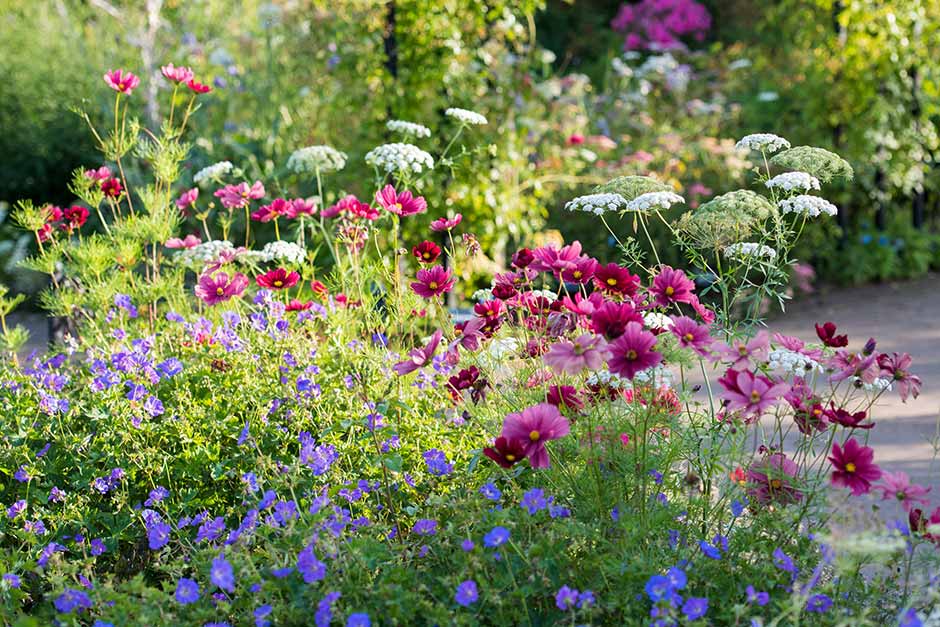As rewilding becomes ever more popular and we long for a touch of nature in our gardens, growing wildflowers is becoming ever more mainstream. But gardeners and plant breeders can't resist picking out the best forms – or breeding them intentionally. So now there's a whole range of 'upgraded' wild plants that have new flower colours, better forms or just simply bloom for longer.
Purple loosestrife (Lythrum salicaria) is one of our most colourful A native plant is one that originated or arrived naturally in a particular place without human involvement. In the British Isles, native plants are those that were here during the last ice age or have arrived unaided since.
Small scabious (Scabiosa columbaria) is a delightful native wildflower, and one that's really useful for pollinating insects as it blooms later than many others. 'Mariposa Blue' is an improved selection that is more compact and bushy, with added flower-power thrown in. A useful plant for a dry, sunny spot.
Plant breeding work has given foxgloves (Digitalis purpurea) an extra boost of flower power. Varieties such as 'Dalmatian White' have larger flowers and more of them than wild plants. By crossing Digitalis purpurea with other Digitalis species, breeders have created a whole new kind of foxglove, Digitalis × valinii. While they're not as hardy as wild plants, they more than make up for it by flowering their socks off for months on end. Look out for 'Firecracker' - it's one of the very best!
Yarrow (Achillea millefolium) is a familiar plant in lawns and on roadsides. It's wonderful for wildlife as the flat flowerheads make the perfect landing pads for all sorts of pollinating insects. Wild plants bloom in slightly muddy shades of white and pale pink: choose a cultivated variety and you can get flowers in a range of yellows, reds, rich pink and orange.
Another common weed you might want to take a fresh look at is selfheal (Prunella vulgaris). Two cultivated varieties, 'Blue Pearl' and 'Pink Pearl' have flowers many times bigger than wild plants. Their botanical origins are debated (possibly a cross between Prunella vulgaris and P. grandiflora) but whatever their parentage they make hardy garden plants that will flower over a long period in summer and autumn.
Mallow (Malva sylvestris) is a delightful wildflower. Its bright pink flowers adorn all sorts of sunny places from roadside verges to meadows and cliffs. Its varieties 'Mauritiana' (strictly speaking Malva sylvestris var. mauritiana) and 'Zebrina' offer different colours: the former is a rich blackcurranty purple while the latter has white petals streaked with purple. All are easy to grow in sunny gardens.


